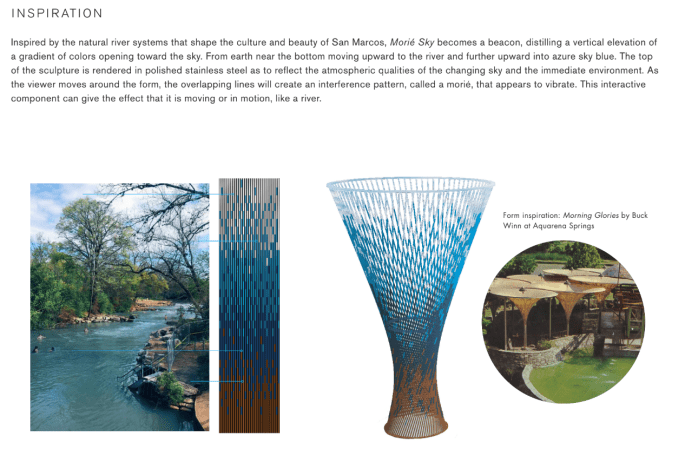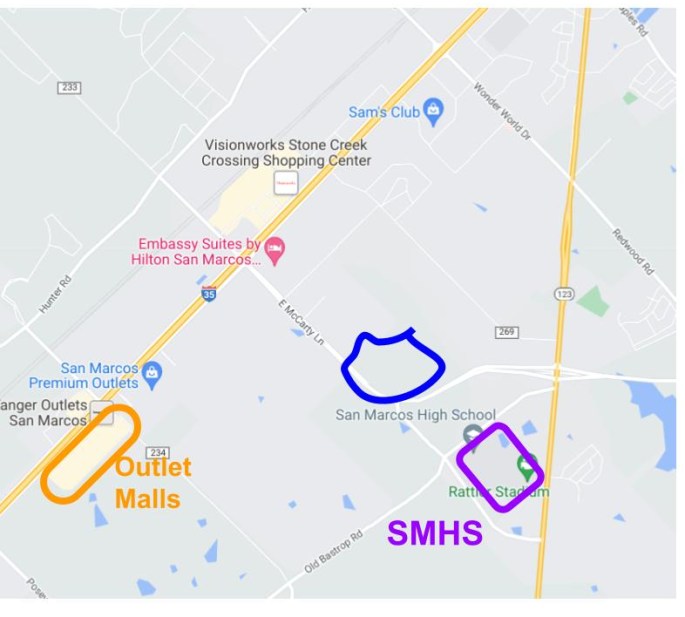Item 14: “ARP” stands for “American Rescue Plan”, ie Covid money. We’re down to our last $3 million. We started off with $18 million. This last bit has to be spent by the end of 2024, or we have to give the remainder back.
Here’s what staff is proposing, based on instructions from council:

The controversial part is spending $1.3 million on Uhland Road quiet district. Here’s what I think that means: Every time the trains cross the road, they blast their horns. If you want that to stop, you have to construct automatic traffic arms, and turn-around barriers, and some other safety things. We’ve done this in other neighborhoods.
Staff is trying to get the quiet zone funded through other grant money, but their most recent grant application was denied, so they stuck it here. It’s not really connected with Covid, though.
Alyssa Garza makes the case that ARP funds should be used to address direct needs. In other words, we shouldn’t be spending $2 million on the two parks and a quiet district. Direct needs are things like financial emergencies, mental health care, and violence prevention programs. Alyssa focuses in on that last one: other cities are using ARP money to pilot communiy violence prevention programs. Why not us?
She’s making a clever case: all of you who are obsessed with the police and crime rates? Let’s address violence in a preventative way. Wouldn’t that be better than just being reactive?
Objectively, Alyssa is right. (Let’s pretend I’m objective.) Support for police departments is generally shrouded in language about public safety and rising rates of violent crime. But police departments respond to violence. They’re reactive. That’s different from proactively working to reduce the causes of violent crime. If you claim you care about public safety, then you should support community violence prevention programs.
So Alyssa asks point blank: Can we re-arrange this money to pilot a violence prevention program?
And…. <crickets> … the silence dragged out, and no one joined in.
The problem is that the rest of council has a semi-acceptable excuse: there really is a fixed deadline to spend this money. Staff’s recommendations are all shovel-ready programs. So the rest of council doesn’t really have to entertain what Alyssa is saying, because momentum is on their side.
Should we be furious at them? It depends on what happens next.
Possibility 1:
- Alyssa brings up community violence prevention programs at the next CJR subcommittee meeting.
- Mayor Hughson and Shane Scott respond enthusiastically!
- They work up a pilot program for Council.
- Council enthusiastically finds some funding and moves forward with it!
In this case, everyone is forgiven for squirming uncomfortably and avoiding Alyssa’s proposal to use ARP funding right now.
Possibility 2:
- Alyssa brings up community violence prevention programs at the next CJR subcommittee meeting.
- It gets bogged down in the slow wheels of San Marcos city government.
- Everyone says nice things, but also sandbags the process.
- It stays in the background as a nice idea, and never quite makes it into implementation for the next several years.
In this case, City Council is making it clear: “Public safety” is a code word for “We love the police!” and they are going to prioritize SMPD over actual public safety whenever given the choice. Vote the jerks out of office!
…
Item 18: Here’s Trace development, way down south, past the outlet malls:

That’s where Rodriguez Elementary is.
Some sort of development wants to go in here:

The Trace developers are definitely worried about something industrial right going in right behind people’s backyards. Council decides to form a subcommittee: Jane Hughson, Matthew Mendoza, and Jude Prather are going to take care of business for ya.
…
Item 19: File this one under “victories are anticlimactic”: eight months after Max Baker loses his city council seat, they officially change the rules to allow subject matter experts to attend subcommittee meetings. (Discussed here previously.)
This was a flashpoint with Max – he’d bring up new issues, and everyone would cock their heads like a confused golden retriever, and then ignore what he was saying. Max wanted to bring in experts to explain complex issues, so that others would take him seriously, but he couldn’t even get experts in, because no one took him seriously. (Partly, this was because Max generally had 50 issues to solve simultaneously, and everyone kind of just got woozy at the overload. But partly, they just didn’t want to consider new ideas, like the environmental impact of the SMART/Axis Terminal.)
But this can also be abused, as noted by Markeymoore and Forrest Fulkerson in the comments here. If you have councilmembers who are shmoozy with a developer, and they invite the developer to the subcommittee meeting, you may essentially have a developer writing their own agreement with the city.
…
Item 21: Ramon Lucio Park is where the baseball fields are.
There’s also a little path to a bridge over the river, which leads to some trails. And there are some art installations, right where you’d head from the parking lot towards the river.
More art is coming!

I am not sure where it will go, but I’m guessing with the other art installations. (Not at the falls, despite that picture.)
It’s big:

This is the winner of a nationwide call for artist submissions, and then an open house forum, and finally the arts commission picked this one.
I didn’t find the price tag anywhere, but I generally think that arts enrich a community, and it’s worth spending money to compensate artists fairly.
By the way: has everyone seen the kites display at the library? I love them so much.
…
Item 20: Finally! I promised you more parking news, and you stayed for it. Here’s your big pay-off:
Things in the works:
- Parking Benefit Districts: this is not paid parking, but it’s a necessary pre-condition.
- Parking Mobility Funds: if we had paid parking, we’d need a bucket to put the revenue in.
- COLAs for fees
Currently, our parking tickets cost $20. They’ve been at that rate since 1974. That’s almost 50 years! Congratulations, $20 parking tickets, you’ve had a great run.
(Just for funsies, I went to an inflation calculator: a $20 ticket in 1974 is equivalent to a $126 ticket in 2023. What a bargain we’re getting!)
What’s proposed is having fees drift upward automatically with inflation. In other words, every three years or so, you’d just set a new, higher fee rate to match inflation. (COLA stands for Cost of Living Adjustments.)
Jane Hughson cracked me up again: “This is a good idea. We should just get it automated, so we don’t have to update it every… fifty years.”
Here’s why I like this so much: First, Jane says that we do this already with other fees that the city charges. Second, we do this with certain city employees. In other words, we are already well-versed in COLAs!
Which brings me to my hobbyhorse: Automatic COLAs for minimum wage. San Marcos does have a minimum wage of $15/hour for any business receiving tax breaks from the city. LET’S PEG IT TO INFLATION! If we can do this for parking tickets and city employees, surely we understand why this is so important for our neighbors earning minimum wage.
But wait! There’s more!
- An amnesty/incentive program. Suppose you rack up a huge amount in fines. Maybe you even got booted. This is the program that will make it easier for you to settle up with the city – like signing up for volunteer hours instead of owing money, for example.
Everyone loves this idea. I love this idea, too.
5. Dynamic pricing. In other words, a little sign that says “Violators will be fined $20-$60” or whatever. So if you park illegally in off-peak hours, it’s not so bad. If you park illegally in the middle of Sights & Sounds, you get charged more.
(They claimed this was about deterrence, but surely it’s about making more money. It’s hard to see how dynamic pricing would make a dent in the decision-making of the shmuck clogging up Sights & Sounds, in the middle of four different choir performances.)
All of these will be fine-tuned before Council officially votes on them. But it’s clear: our widdle San Marcos is gwowing up.







